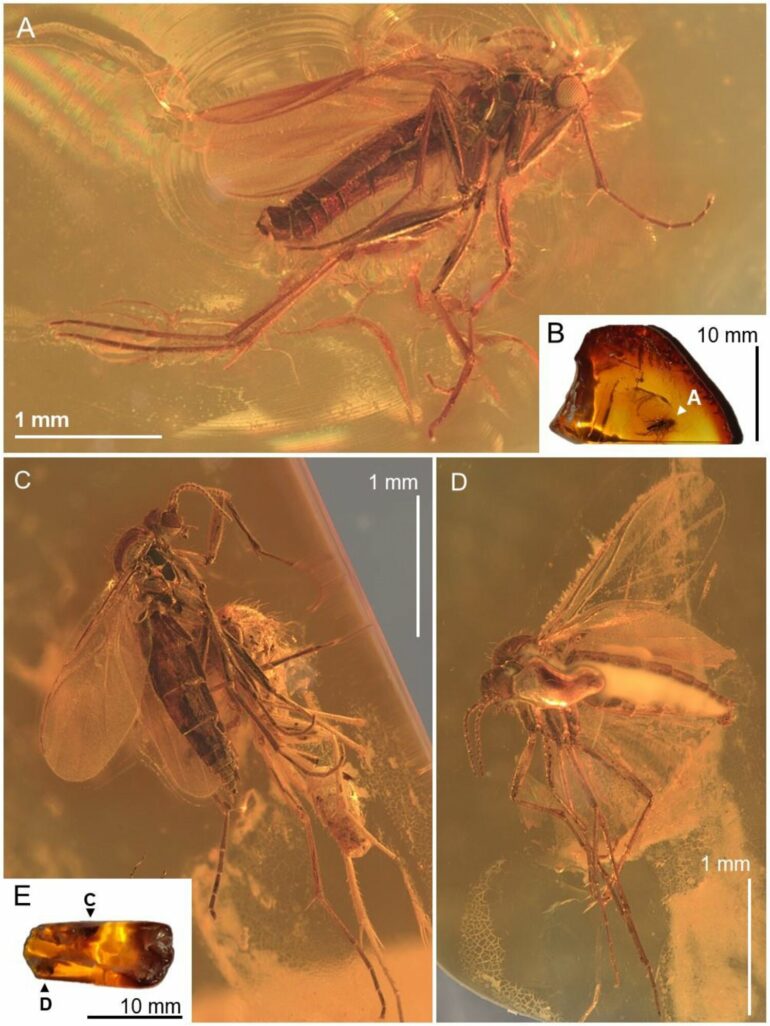A Danish amber collector’s find upon a wild North Sea shore in the 1960’s has proved to be of great and surprising significance. After having thoroughly examined the roughly 40-million-year-old piece of amber, University of Copenhagen researchers have discovered it to contain the first fossil of a predatory fungus gnat belonging to a rare genus. The research contributes new knowledge about the distribution of the gnat species and about biodiversity across space and time.
The research is published in the journal Scientific Reports.
Are you fed up with the summertime onslaught of fruit flies, gnats, mosquitoes and other tiny winged insects? If so, be happy that you weren’t around 40 million years ago. Back then, Europe’s climate was warmer and more humid, which provided favorable conditions for gnats, among other things.
One of these gnats, which met its end after being trapped in a lump of pine resin, has given researchers from the Natural History Museum of Denmark the opportunity to add a new prehistoric gnat species to its family of insects. This first fossil of a rare and never before studied species of gnat, Robsonomyia henningseni, was found in a piece of Baltic amber along Denmark’s North Sea coast in the 1960’s.
For decades, the piece had been tucked away in the museum’s 70,000-piece amber collection. Recently, it was



